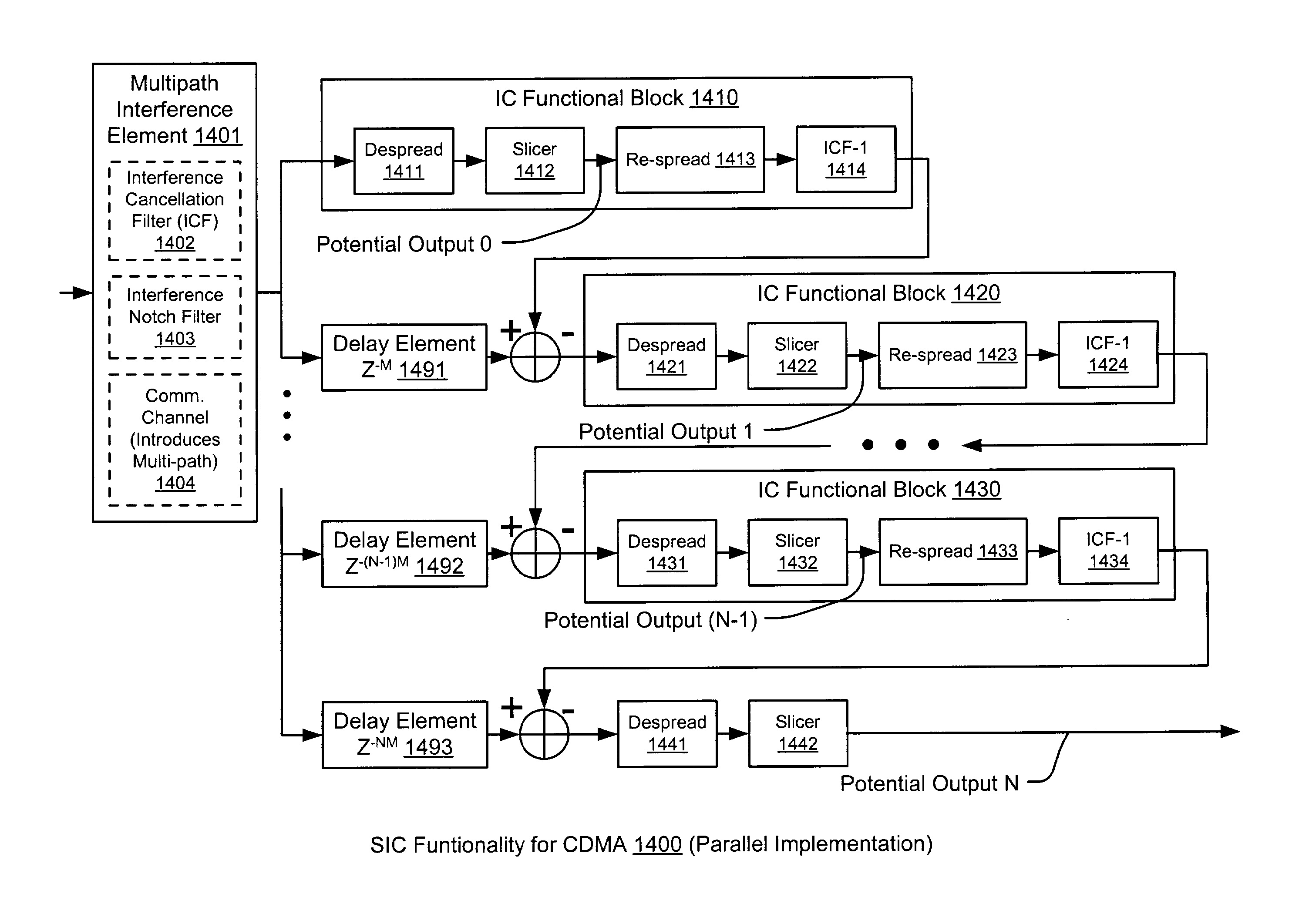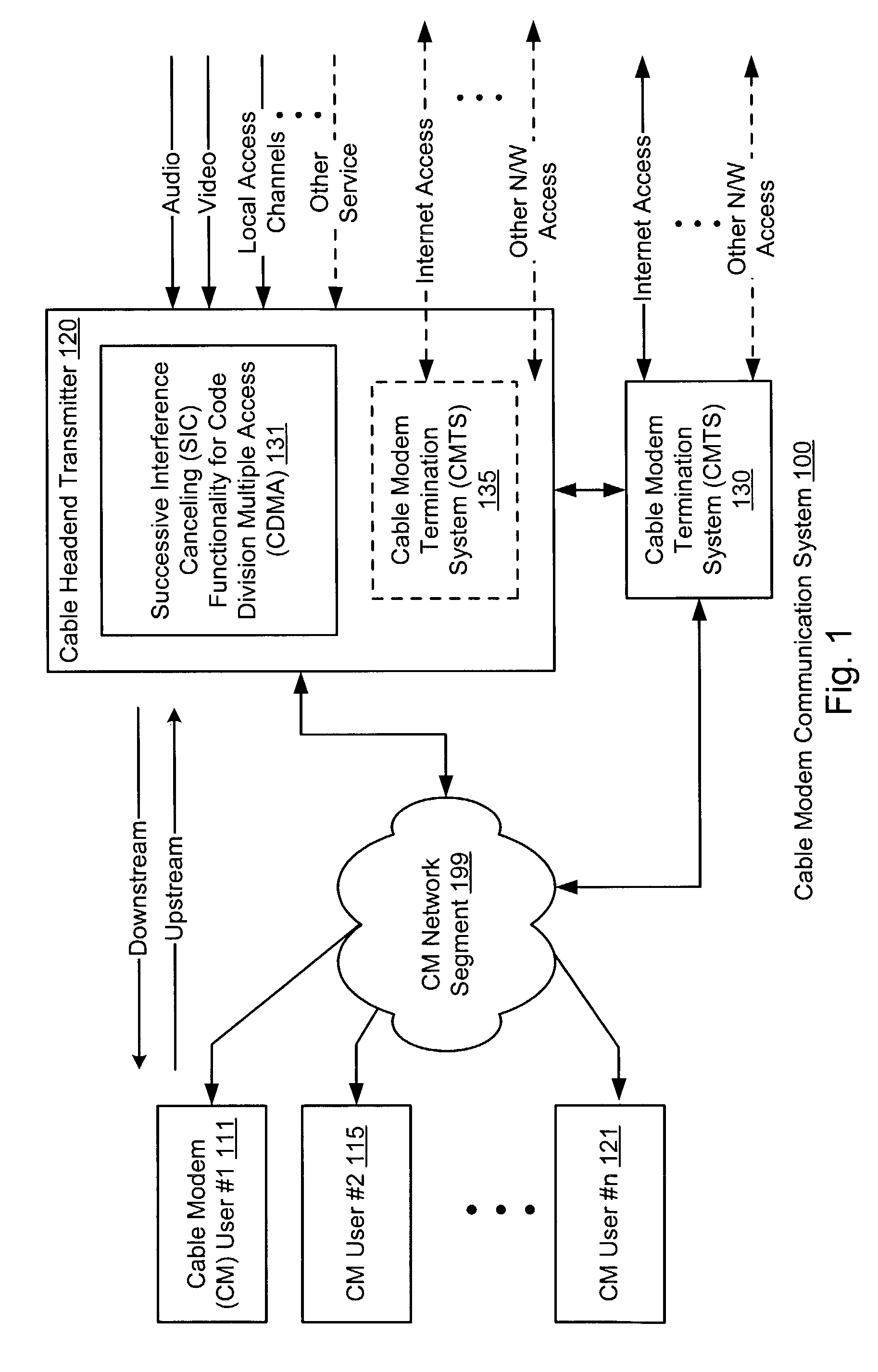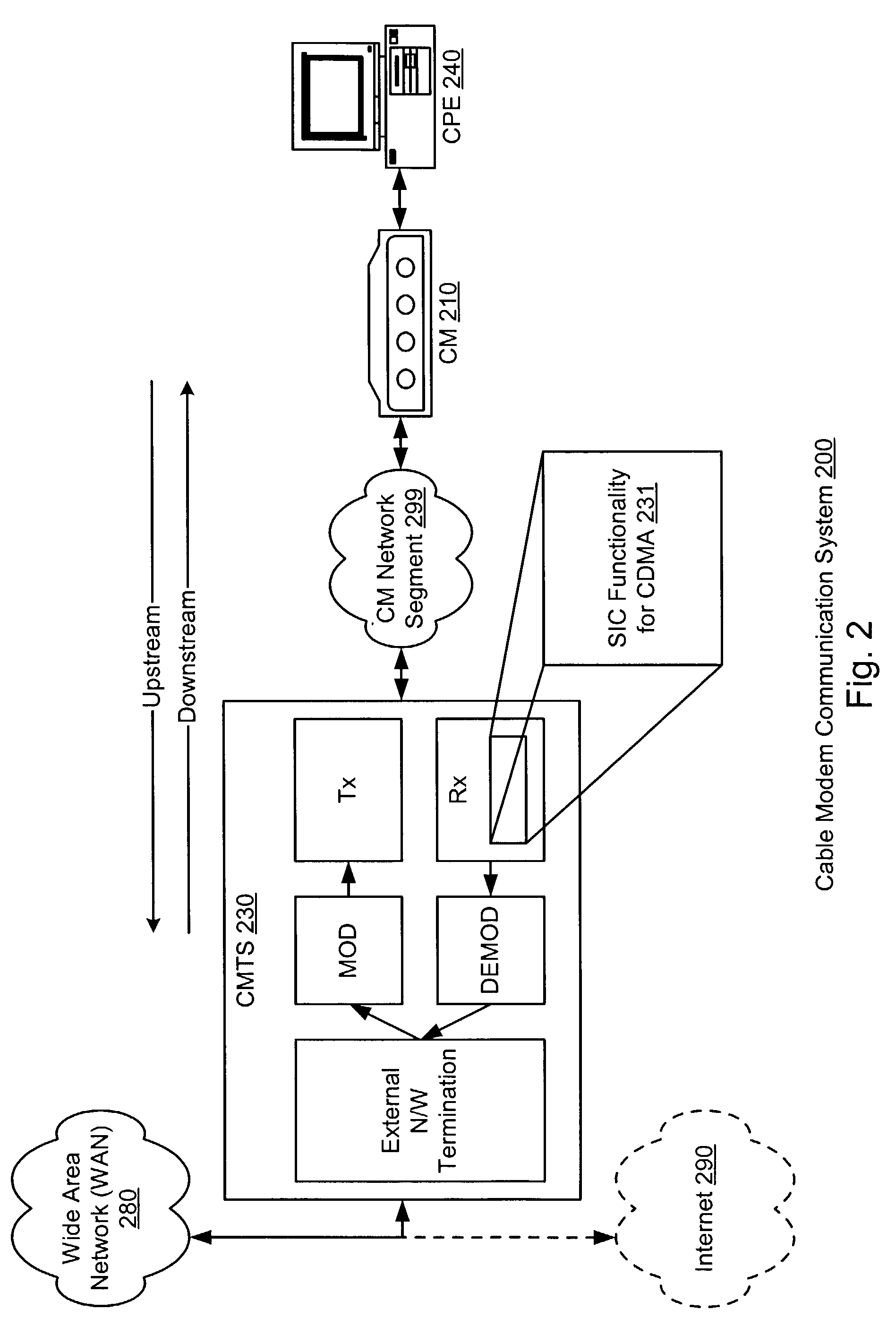Successive interference canceling for CMDA
a technology of interference cancelling and cmda, applied in the field of communication receivers, can solve problems such as the introduction of multi-path effects, the inability to scale and delay one symbol, and the inability to add a scaled and delayed version of one symbol to other symbols
- Summary
- Abstract
- Description
- Claims
- Application Information
AI Technical Summary
Problems solved by technology
Method used
Image
Examples
Embodiment Construction
[0045]FIG. 1 is a system diagram illustrating an embodiment of a CM communication system 100 that is built according to the invention. The CM communication system includes a number of CMs (shown as being used by a CM user #1111, a CM user #2115, . . . , and a CM user #n 121) and a CMTS 130. The CMTS 130 is a component that exchanges digital signals with CMs on a cable network.
[0046]Each of a number of CM users (shown as the CM user #1111, the CM user #2115, . . . , and the CM user #n 121) is operable to communicatively couple to a CM network segment 199. A number of elements may be included within the CM network segment 199. For example, routers, splitters, couplers, relays, and amplifiers may be contained within the CM network segment 199 without departing from the scope and spirit of the invention.
[0047]The CM network segment 199 allows communicative coupling between a CM user and a cable headend transmitter 120 and / or a CMTS 130. In some embodiments, a cable CMTS is in fact conta...
PUM
 Login to View More
Login to View More Abstract
Description
Claims
Application Information
 Login to View More
Login to View More - R&D
- Intellectual Property
- Life Sciences
- Materials
- Tech Scout
- Unparalleled Data Quality
- Higher Quality Content
- 60% Fewer Hallucinations
Browse by: Latest US Patents, China's latest patents, Technical Efficacy Thesaurus, Application Domain, Technology Topic, Popular Technical Reports.
© 2025 PatSnap. All rights reserved.Legal|Privacy policy|Modern Slavery Act Transparency Statement|Sitemap|About US| Contact US: help@patsnap.com



